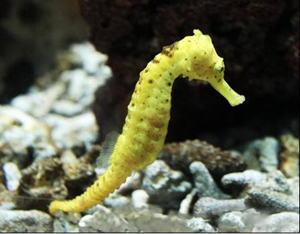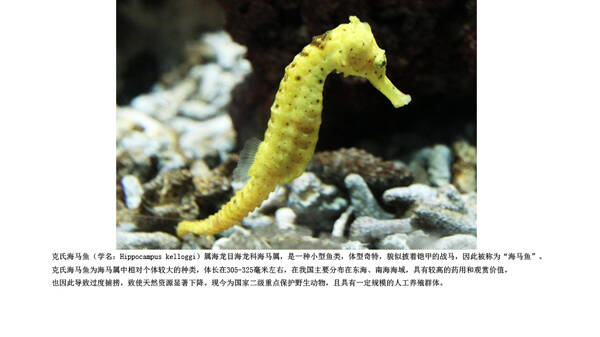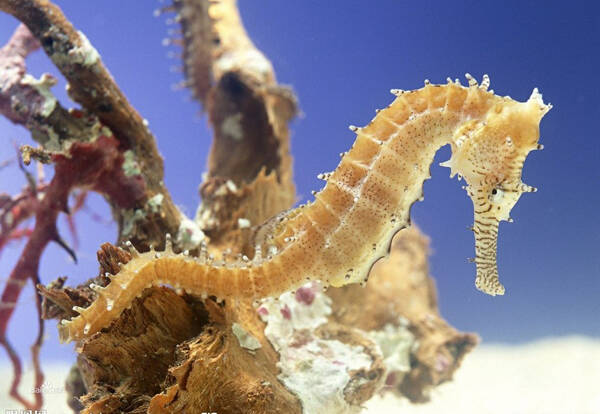
Alias Hippocampus kelloggi,Kelloggi'sseahorse,Seahorse, Grimm's seahorse, Ryukyu seahorse, seahorse
Family O.Acanthopanax F.Syngnathidae G.Hippocampus
Weight No verification information
Kelloggi's seahorse (scientific name: Hippocampus kelloggi), foreign name Kelloggi's seahorse, is a Syngnathidae, Hippocampus.

Kelloggi's seahorse is a warm-water fish near the coast. They like to live on the seabed gravels or algae in coastal areas and inner bays, where there is little freshwater inflow, calm seas, clean water quality and high transparency. Juveniles and early juveniles mainly feed on small copepods and their larvae; late juveniles and adults mainly feed on copepods, amphipods, mysids, krill, fireflies, hook shrimps and straw shrimps.
During reproduction, the skin folds on the abdomen of the male seahorse form an egg-laying bag, and the female seahorse lays eggs in the male's egg-laying bag. The reproduction method is very unique: the female fish lays eggs into the male seahorse's brooding bag and completes fertilization. The inner wall of the brooding bag of the Klebsiella pneumoniae seahorse is densely covered with microvessels, which are connected to the embryo's vascular network and can provide partial nutrition for embryonic development. The young seahorse will leave the male's brooding bag only after it is fully developed. After the eggs are fertilized, the young fish will hatch in the brooding bag after 8 to 10 days. The young fish grows fast, with a body length of 130 to 190 mm, a lifespan of 1 to 5 years, and sexual maturity in 9 to 12 months. Each litter can produce hundreds to 1,200 offspring.

The population of Klebsiella pneumoniae was originally large, but due to the degradation of the habitat, overfishing, and resource destruction, its population has declined. According to the World Conservation Union, the population of Klebsiella pneumoniae has been decreasing year by year in the past 10 years, and the population has decreased by at least 50%. The factors that led to the reduction of its resources may not have ended yet, and the trend of resource reduction will continue.
The dried whole body of Klebsiella pneumoniae is used as medicine, and its name is seahorse. The whole body without internal organs is warm in nature, sweet and slightly bitter, and enters the kidney meridian. It is a good product for warming the kidney and strengthening yang, regulating qi and blood, and removing blood stasis and promoting newness. It has the effects of warming the kidney and strengthening yang, stimulating and strengthening. It can not only promote sexual desire, treat impotence, and infertility in women, but also has the effect of turning weakness into strength and invigorating the spirit for the mental fatigue of the elderly and the weak.
Since the 1950s, China has carried out large-scale artificial breeding in Guangdong, Fujian and other places, which not only provides China with the necessary medicine, but also helps to protect wild Hippocampus Clarkii resources, becoming an economic animal breeding industry with broad development prospects. China's largest seahorse breeding base is located in Shanwei City, Guangdong Province. In 2001, the base had 10,000 acres of water for seedling cultivation and growing, with an annual production capacity of 800,000 fish.
Listed in the "Red List of Endangered Species of the World Conservation Union" (IUCN2012 ver3.1) - Vulnerable (VU).
Listed in the "Convention on International Trade in Endangered Species of Wild Fauna and Flora" (CITES) - Appendix II.
Listed as a Class II protected animal in China.
Protect wild animals and stop eating game.
Maintaining ecological balance is everyone's responsibility!